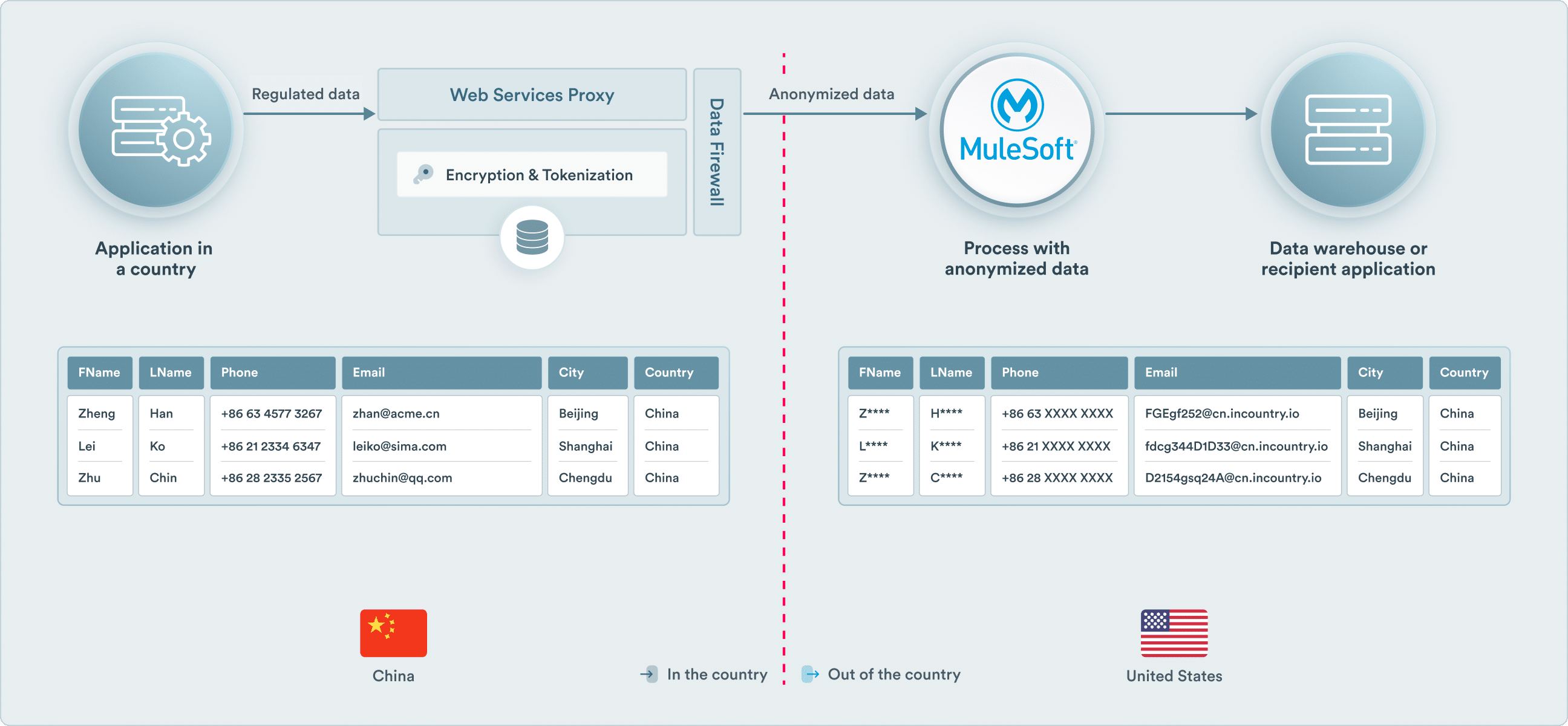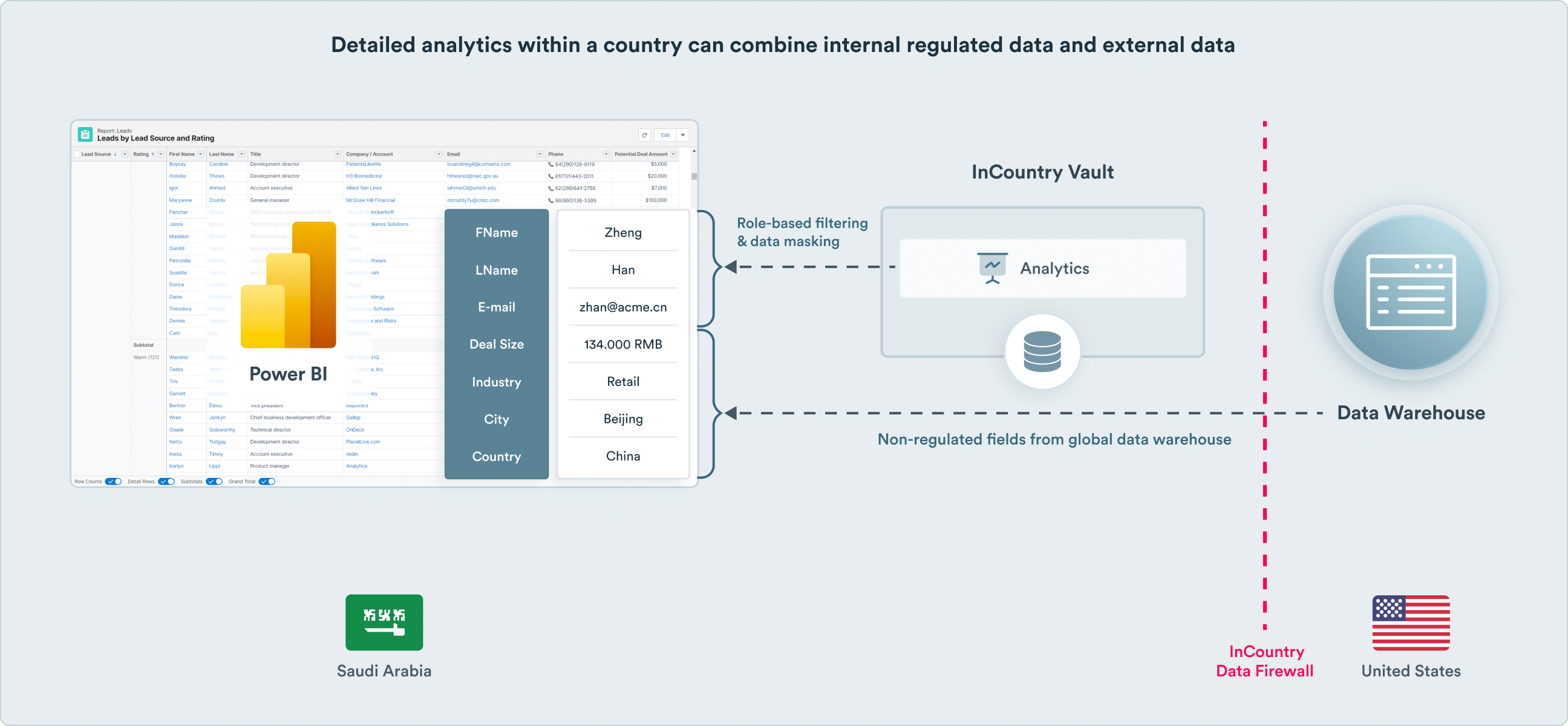

Data Residency for MuleSoft
Redact and anonymize regulated data in MuleSoft pipelines

Process worldwide data while maintaining local compliance
Scale data integration worldwide and keep regulated data isolated from Mule pipelines and DataWeave operations. Keep regulated data isolated from central data stores, continue to gain global insights, and perform local analytics by combining local regulated data with global data.
Mulesoft with InCountry
InCountry operates seamlessly with MuleSoft data integration, ETL, and data mapping to descope regulated data from cross border data transfers. When consuming data from an API or file in a regulated country, use InCountry’s web services proxy in the country to dynamically redact regulated fields and insert anonymized values in their place.
- Integrates seamlessly with existing API integrations and file imports
- Dynamically redact regulated fields
- Anonymize regulated data with flexible tokenization, hashing, and masking algorithms
- Full audit log

Support both local and global analytics and applications
- Global business intelligence and reporting tools continue to operate with regulated data fully masked
- Local users can create dashboards and reports using both local regulated data and data from global warehouses and data lakes
- Define granular access policies for groups of users and applications with query filters, field-level access controls, field masks, and CRUD controls

InCountry Data Residency for MuleSoft
Features
- Direct integration with MuleSoft
- No changes to pipelines or workflows
- Flexible tokenization, hashing, and masking algorithms
Benefits
- Compliance with cross-border data transfer regulations
- Descope ETL, data warehouses, and data lakes from regulated data processing
- Fast setup and time-to-market
How it Works
Identify API requests that pull regulated data across borders
Use the InCountry web services proxy in that country to redact and anonymize regulated data
Continue to use existing pipelines and DataWeave operations
Perform local analytics by combining local regulated data with global data
